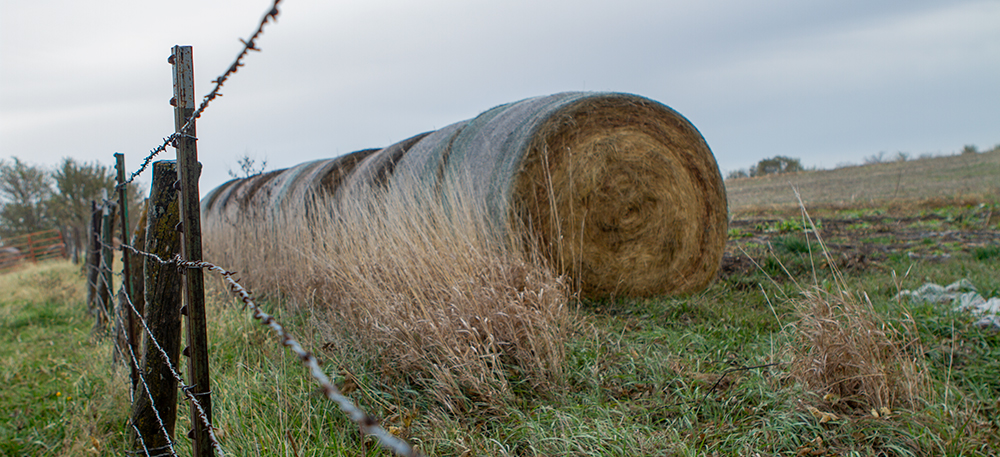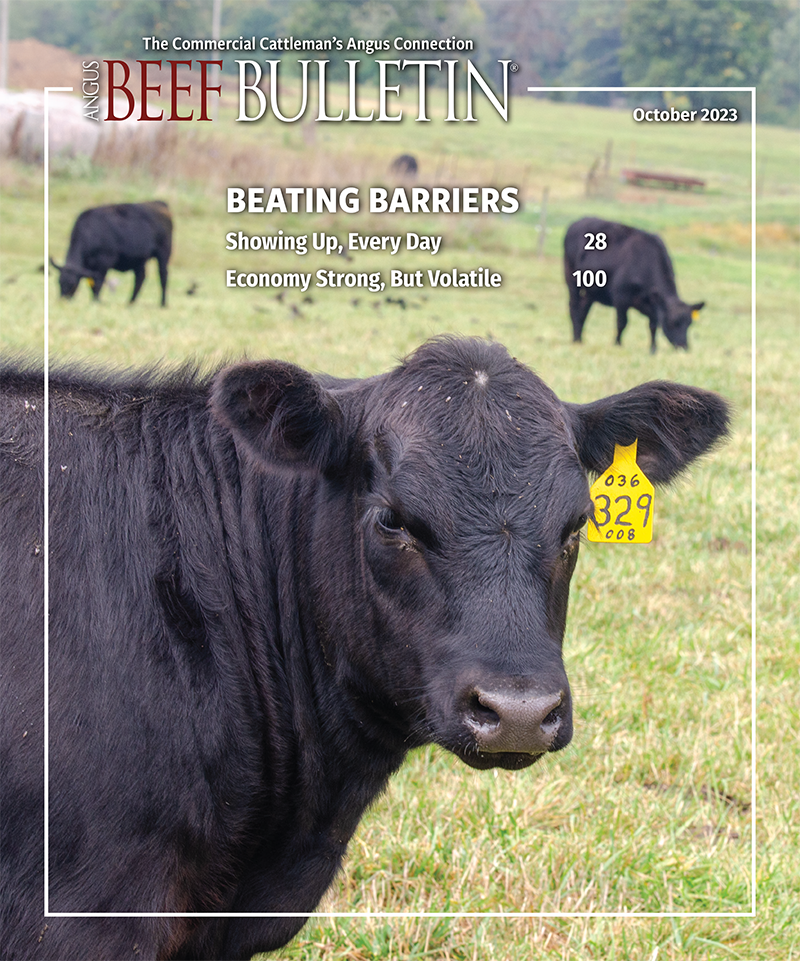
Alternative Feeds When Traditional Sources are Expensive
Calculating cost per pound of nutrient is a good place to start.
When traditional feeds are in short supply or expensive, stockmen must find cost-effective ways to balance a ration. Janna Block, beef nutritionist with Hubbard Feeds and former livestock systems specialist at North Dakota State University (NDSU), says drought conditions make it challenging to feed cows adequately through winter.
“Make an inventory of feeds you have on hand and their nutritional values and try to complement those,” advises Block. “Usually the base ration will be hay or forage of some kind. List what you have on hand and lab analysis, if possible,” she says. If growing and/or harvesting conditions were abnormal (too dry or too wet), quantities and qualities may be different than other years.
If the crude protein level is below 7%, rumen microbes can’t function. Hay quality cannot be determined on visual inspection alone. It is important to evaluate hay by looking at the condition of the bales, color, odor, etc., but this won’t tell you everything. It might be green, but still low in protein. A forage analysis provides the whole picture, she says.
Figure out how many pounds (lb.) of feed per cow are needed. Some people don’t assess stocking rates, and most people don’t want to reduce numbers. But for the herd to stay healthy and performing, it may be necessary to sell some cows. It’s not always wise to buy expensive hay that might take several calf crops to pay for. Sometimes it’s better to sell a few cows and buy less hay, adds Block.
Some people utilize straw and a protein supplement, but straw can be scarce and expensive.
“Straw is mainly a filler,” Block says, providing a rule of thumb. “You can go up to 50% of the diet as straw for a mature cow in mid-gestation, but you need something else to go with it, and [you] must have adequate protein to utilize the straw.”
The amount of straw a cow can digest depends on several factors, she says. It makes a difference what kind of straw (oat, barley, wheat) it is and how mature it was when harvested.
Says Block: “About half the ration is the amount of straw a cow can digest in a 24-hour period. Make sure you are not overloading cows with low-quality forage that won’t go through the digestive tract quickly. If cows don’t have enough protein, they can’t eat enough to meet their needs because it won’t be digested very quickly.”
The gut stays full, and they can’t eat more feed, she explains. This can happen on any low-quality, dry, mature forage; cows can become impacted (sometimes fatally) when they don’t have enough protein, especially if they are short on water.
Vitamins and minerals are important for the health of the fetus.
“Vitamin A is deficient in drought-affected forages, and it needs to be provided via supplement or injection, particularly during the last couple months’ gestation,” she explains. “Then it will transfer to the newborn calf through colostrum. A cow with inadequate levels of vitamins and minerals may have weak/blind calves, retained placentas and other problems.”
Traditional supplemental feeds also may be scarce or more expensive. Before you buy, figure out the cost per pound of the nutrient you are trying to supply. In drought situations, you may be looking at all the nutrients (not just protein), because some feeds are deficient in everything — energy, vitamins, etc.
“You can still look at the primary component and figure cost per pound of that nutrient. Add transportation cost, feed delivery costs, etc., when comparing products. There are many good calculating systems for this. There is one through NDSU, and Nebraska has good ones. Any Extension service will have a feed-cost calculator that can help you,” she says.
Most people are familiar with protein supplements because protein is important, but energy must also be adequate, clarifies Block. In some cases, we might be feeding the wrong type of supplement. This is where feed analysis comes in, along with looking at nutrient requirements.
In some situations, energy may be the first limiting nutrient requirement that must be met, and then fill in with protein. If energy is lacking, we’d feed a different type of supplement than if we were just short on protein. It’s crucial to get the right combination, she says.
When buying low-quality hay (if that’s all you could find or afford), it’s important to figure out how to supplement it.
“Although corn is expensive, if we look at cost per pound of nutrient, it provides more energy than hay,” Block says. “In some cases, corn might be a better buy. It depends on how much of the ration you need to make up with some type of concentrate.”
As long as there is some fiber in the diet to keep the digestive tract functioning normally, you can often make do with something like corn. A nutritionist can help you figure out a balanced ration.
Editor’s note: Heather Smith Thomas is a freelance writer and cattlewoman from Salmon, Idaho.



